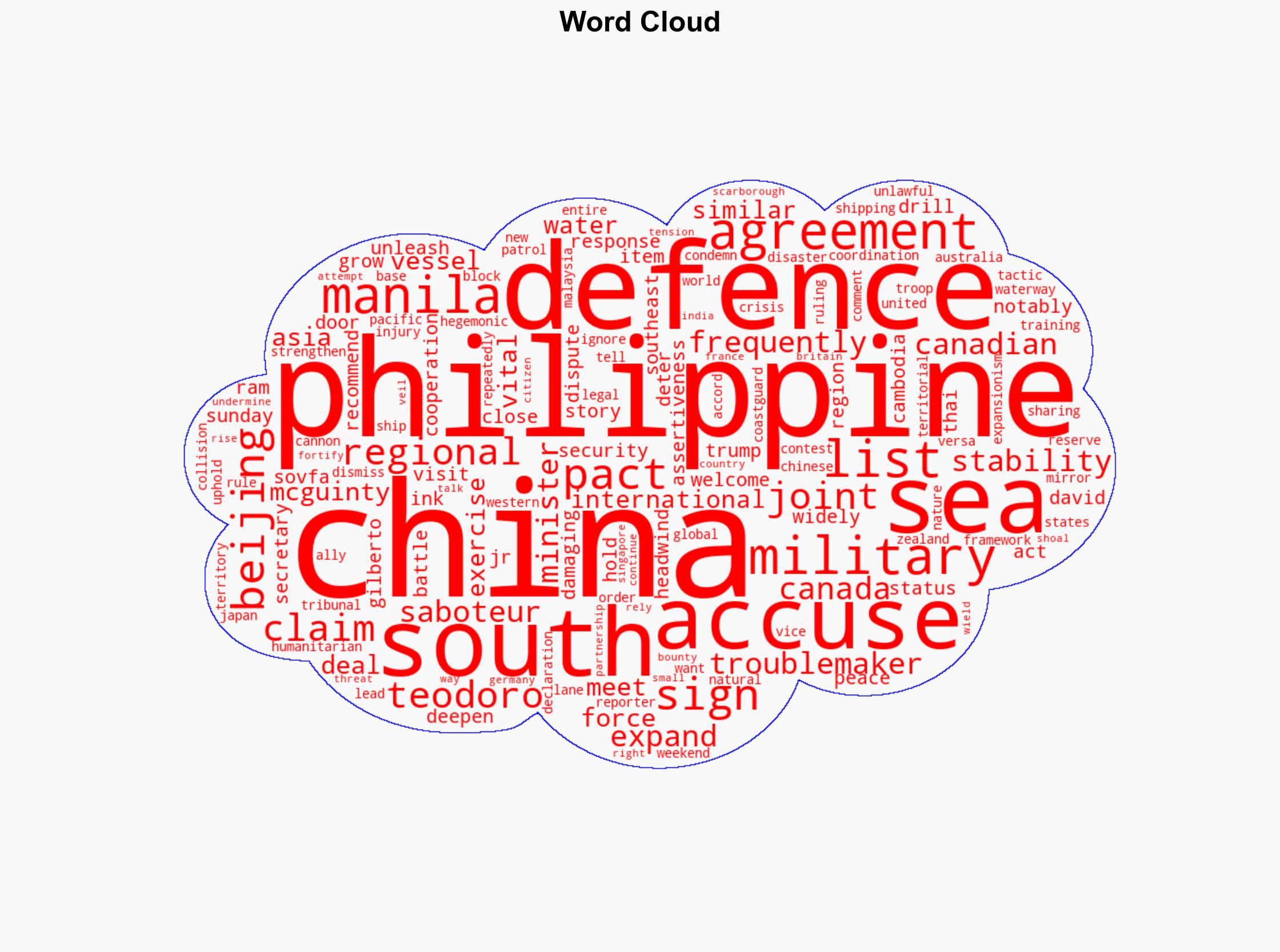Canada Philippines sign defence pact to deter Beijing in South China Sea – Al Jazeera English
Published on: 2025-11-02
Intelligence Report: Canada Philippines sign defence pact to deter Beijing in South China Sea – Al Jazeera English
1. BLUF (Bottom Line Up Front)
The signing of the defense pact between Canada and the Philippines is primarily a strategic maneuver to counter China’s assertive actions in the South China Sea. The most supported hypothesis suggests this is a calculated move to strengthen regional alliances and uphold international maritime laws. Confidence level: Moderate. Recommended action: Monitor China’s response and assess the impact on regional stability.
2. Competing Hypotheses
1. **Hypothesis A**: The defense pact is a direct response to China’s aggressive territorial claims and actions in the South China Sea, aimed at bolstering regional security and deterring further Chinese expansionism.
2. **Hypothesis B**: The pact is primarily a diplomatic gesture to enhance bilateral relations between Canada and the Philippines, with limited immediate impact on the regional power dynamics or China’s strategic calculus.
Using ACH 2.0, Hypothesis A is better supported due to the context of increased military drills and the explicit mention of countering Chinese actions. Hypothesis B lacks evidence of significant diplomatic shifts beyond military cooperation.
3. Key Assumptions and Red Flags
– **Assumptions**: It is assumed that the defense pact will effectively deter Chinese actions and that Canada has the capability to influence regional security dynamics significantly.
– **Red Flags**: Potential overestimation of the pact’s deterrent effect on China. The absence of China’s detailed response or strategic adjustments is a critical gap.
– **Cognitive Bias**: Confirmation bias may lead to overemphasizing the pact’s impact without considering China’s potential countermeasures.
4. Implications and Strategic Risks
– **Patterns**: Strengthening of alliances between Western and Southeast Asian nations to counterbalance China’s influence.
– **Cascading Threats**: Potential escalation of military tensions in the South China Sea, impacting global shipping routes and regional economies.
– **Economic Dimension**: Disruption in trade routes could have global economic repercussions.
– **Geopolitical Dimension**: Increased polarization between Western allies and China, potentially drawing in other regional powers.
5. Recommendations and Outlook
- Monitor regional military activities and China’s diplomatic engagements for signs of escalation or de-escalation.
- Encourage diplomatic dialogue between involved parties to prevent miscalculations.
- Scenario Projections:
- **Best Case**: Strengthened regional security alliances deter further Chinese aggression without conflict.
- **Worst Case**: Military confrontation in the South China Sea disrupts global trade and escalates into broader conflict.
- **Most Likely**: Continued strategic posturing with periodic diplomatic engagements to manage tensions.
6. Key Individuals and Entities
– Gilberto Teodoro Jr.
– David McGuinty
– China (as a geopolitical entity)
7. Thematic Tags
national security threats, regional focus, geopolitical strategy, maritime security




